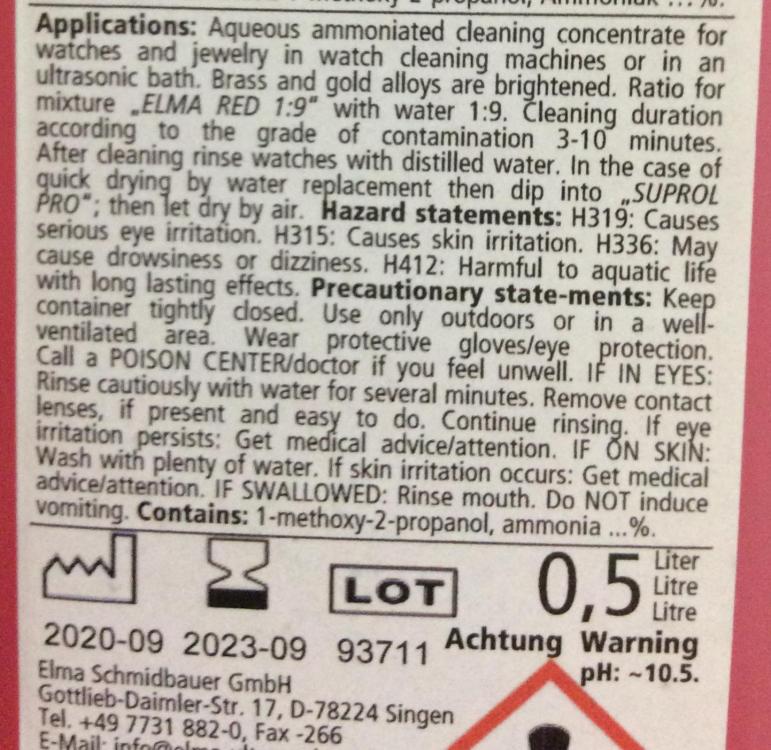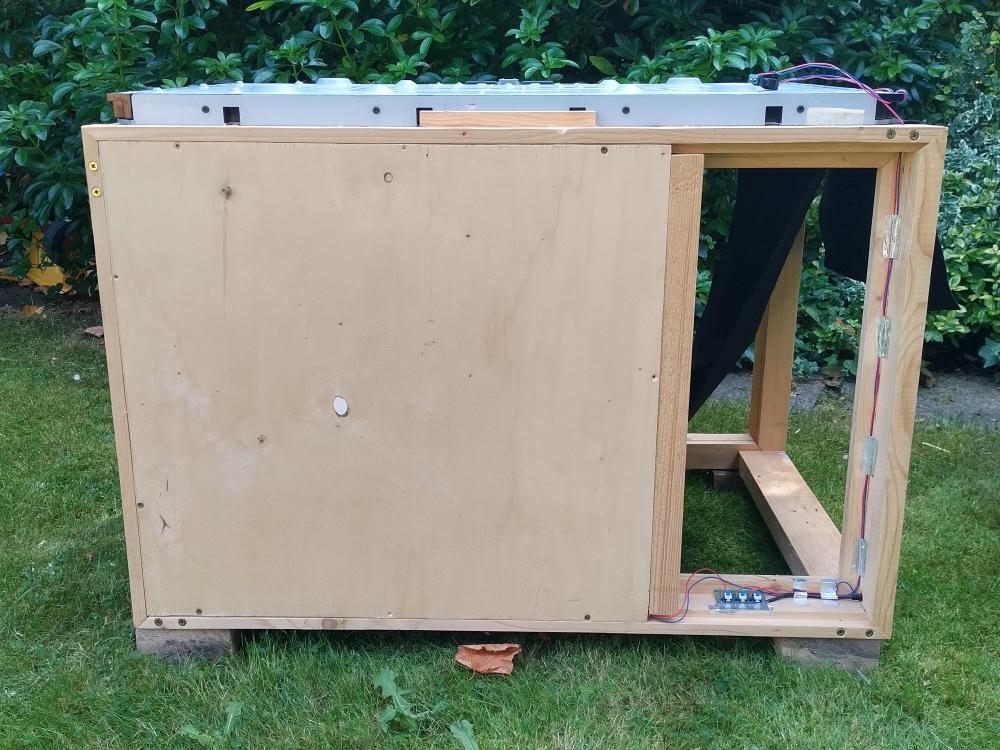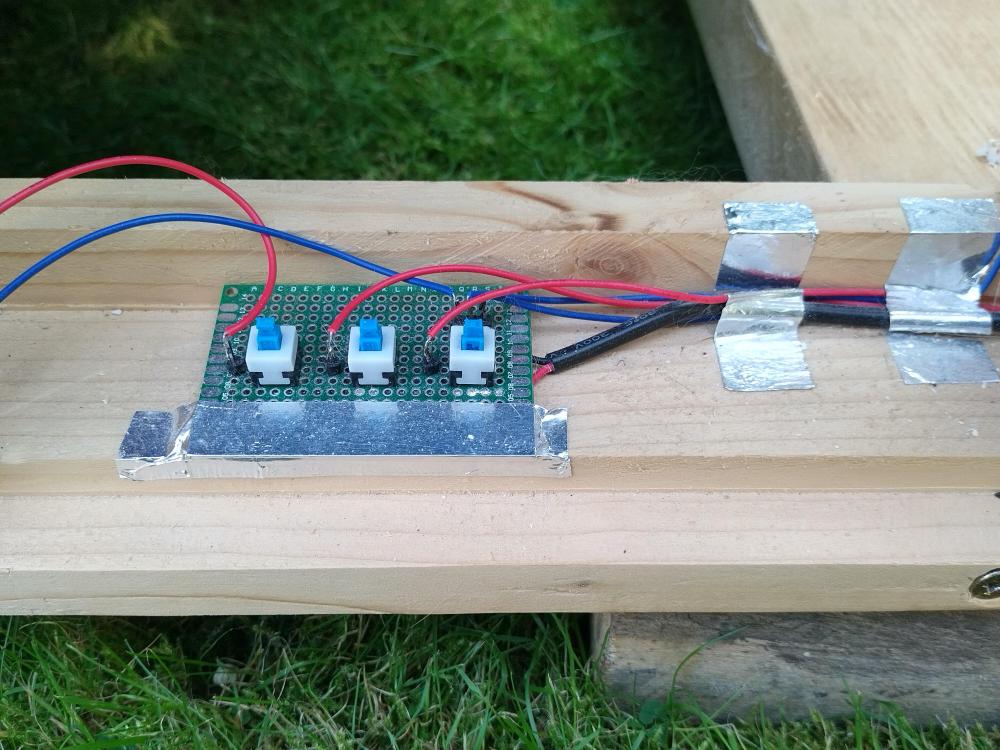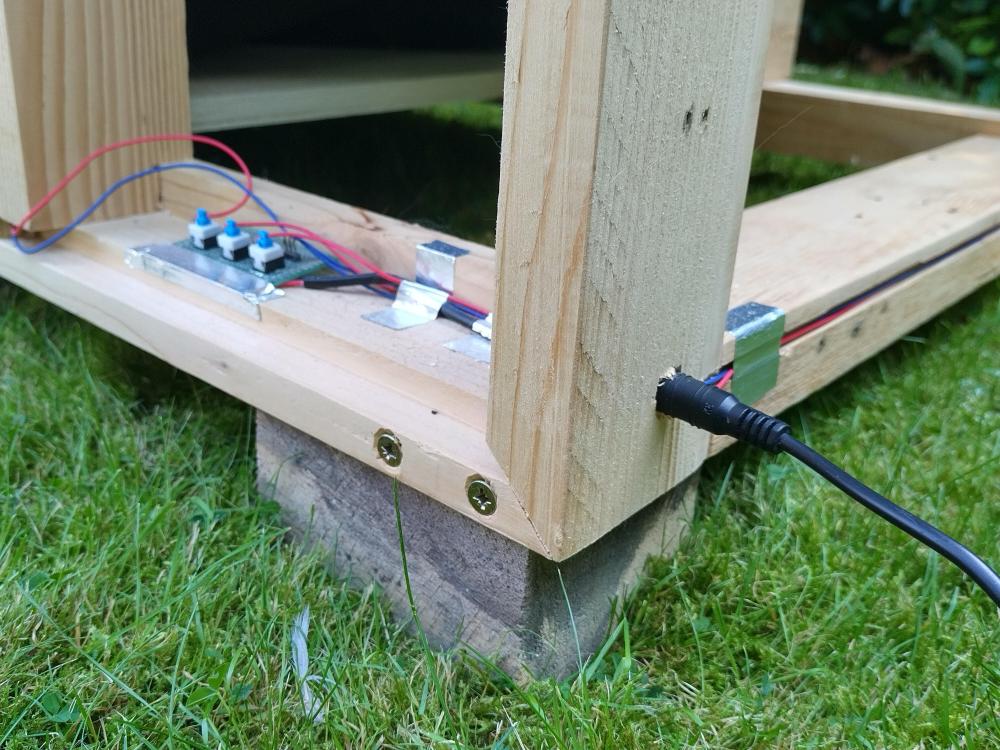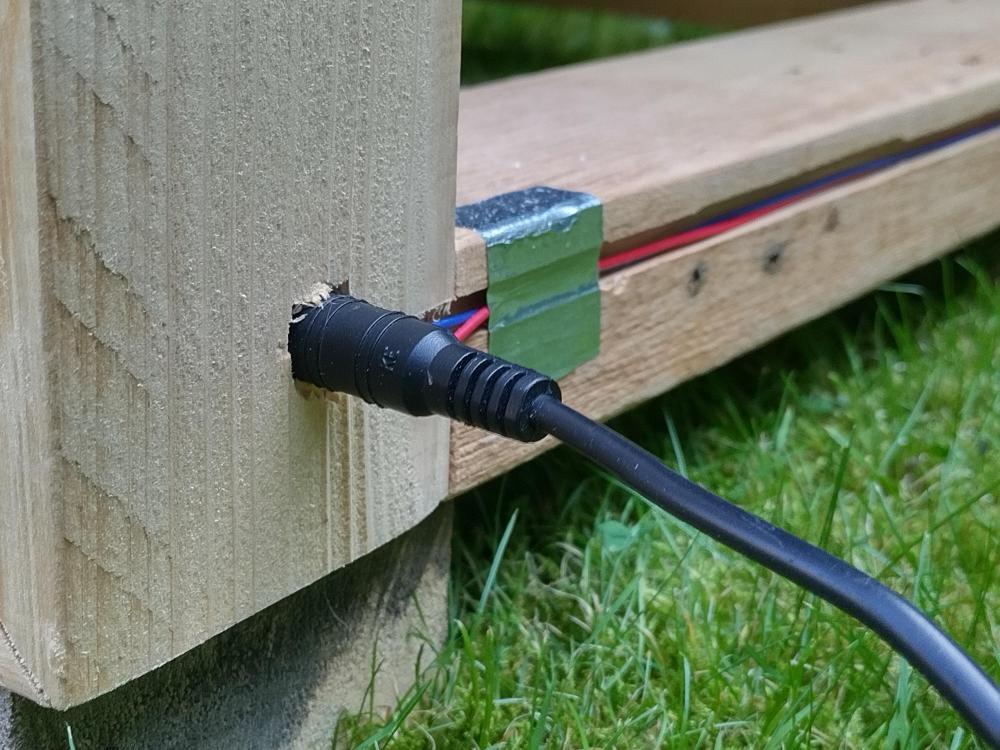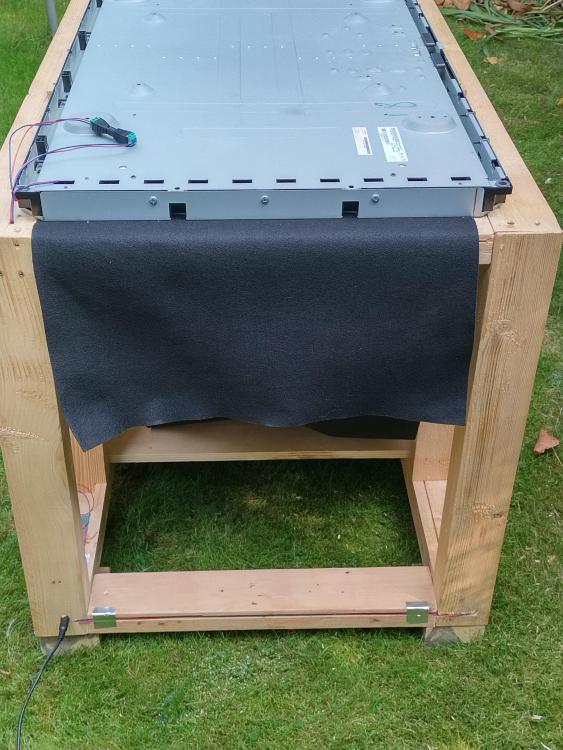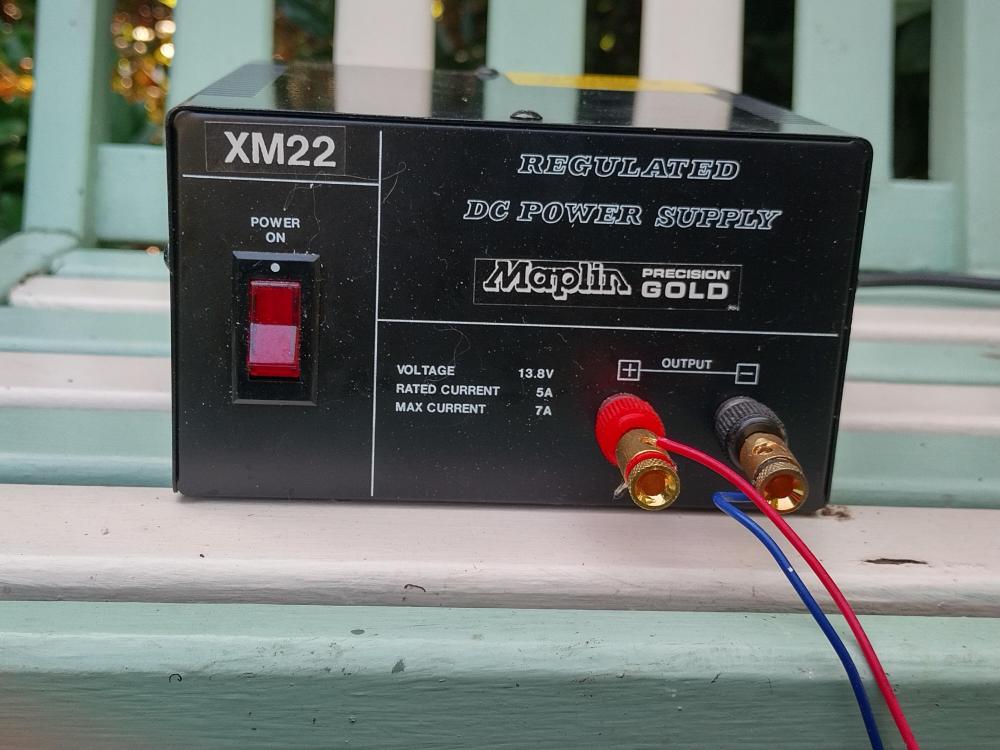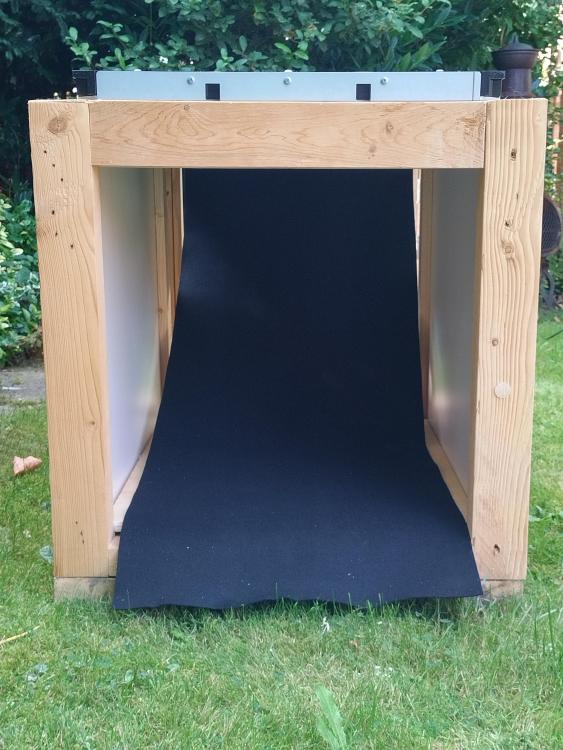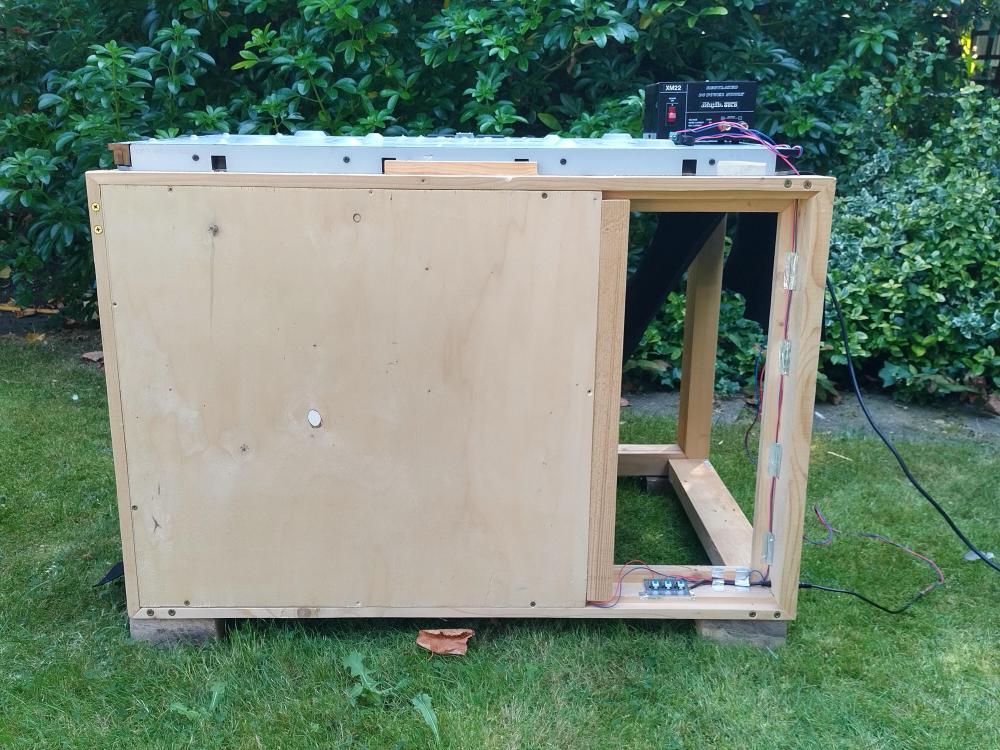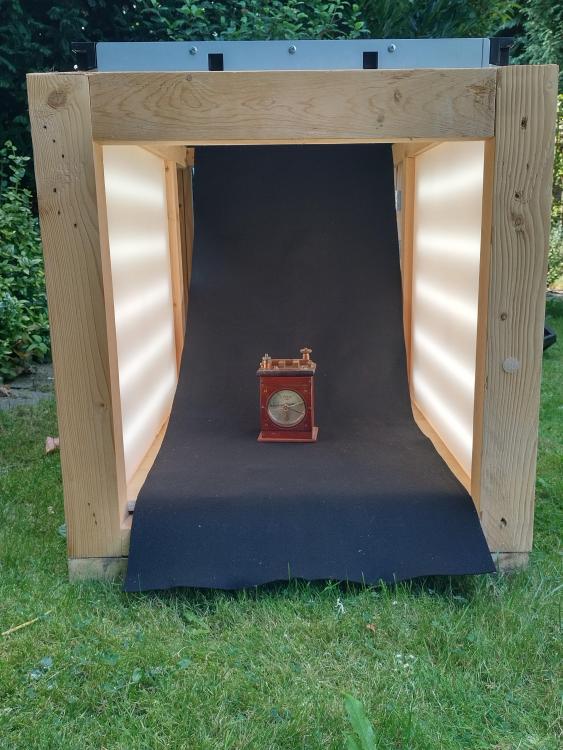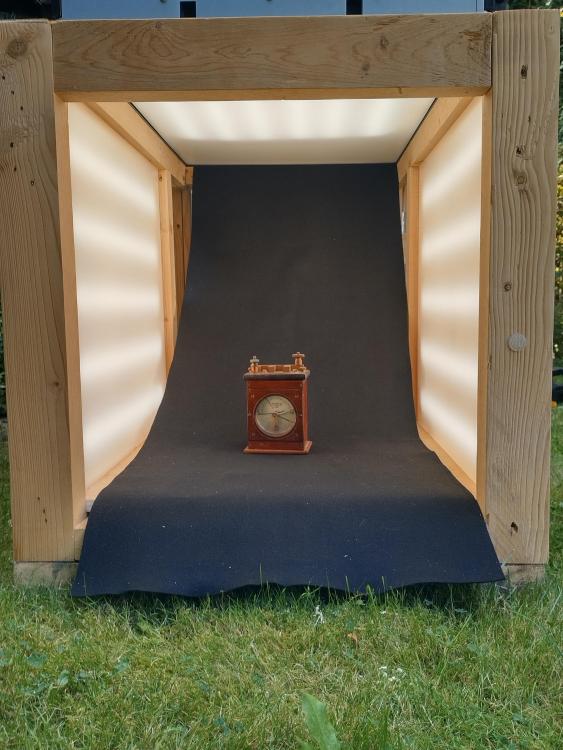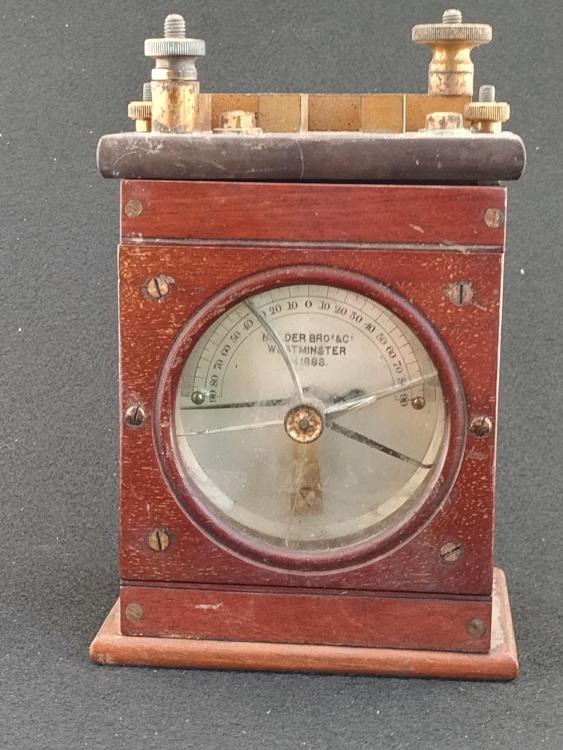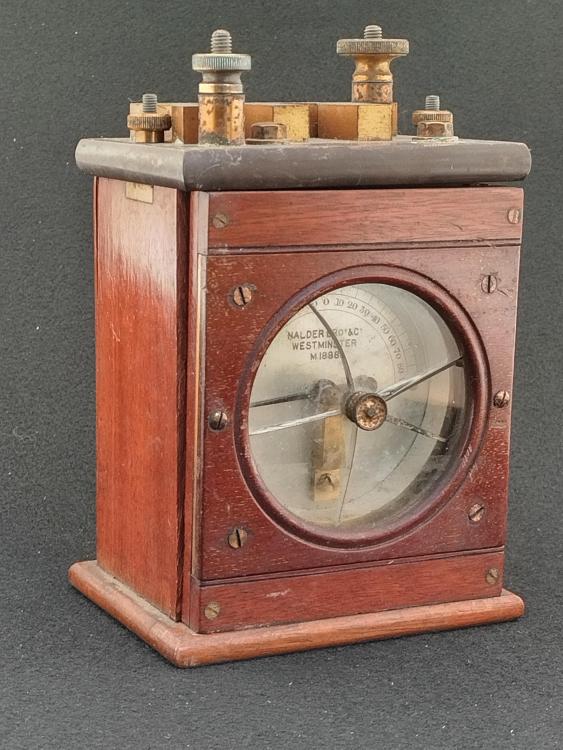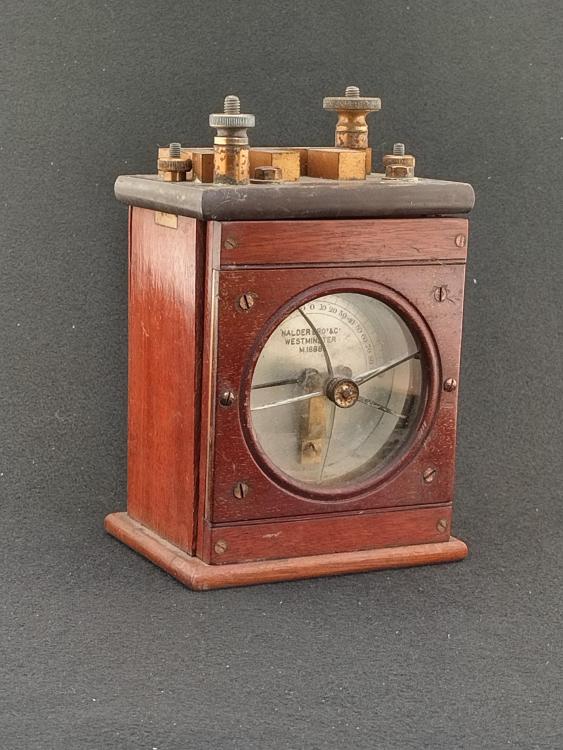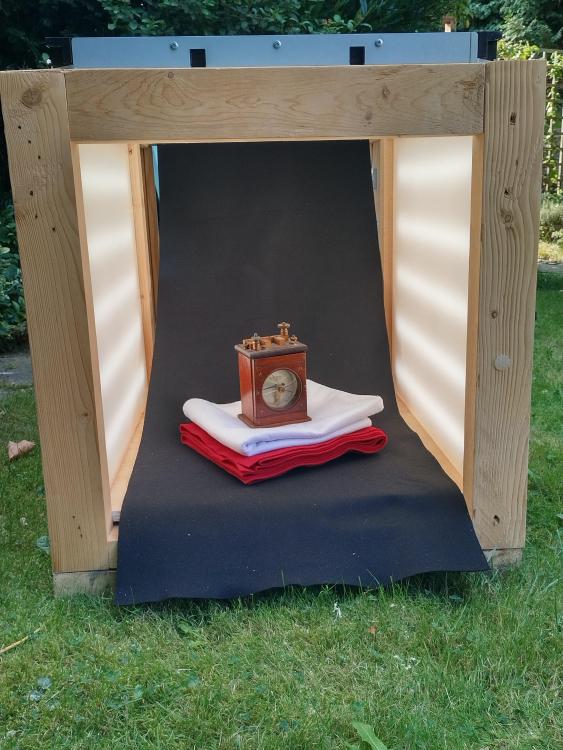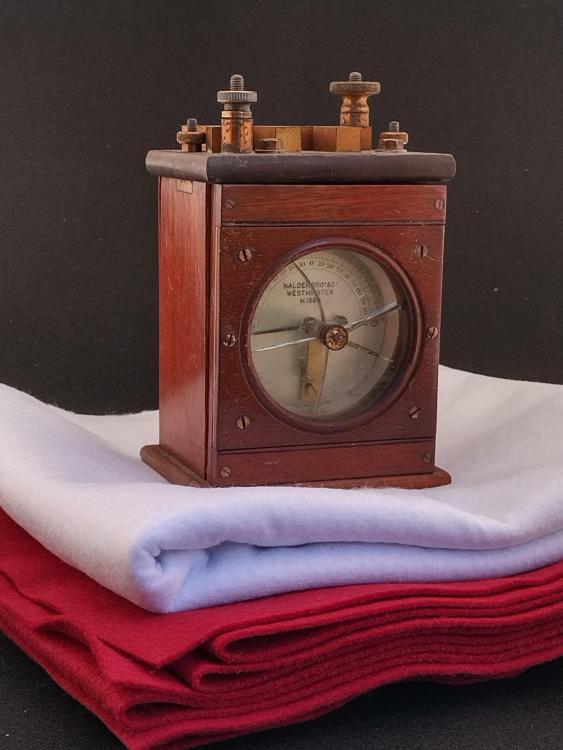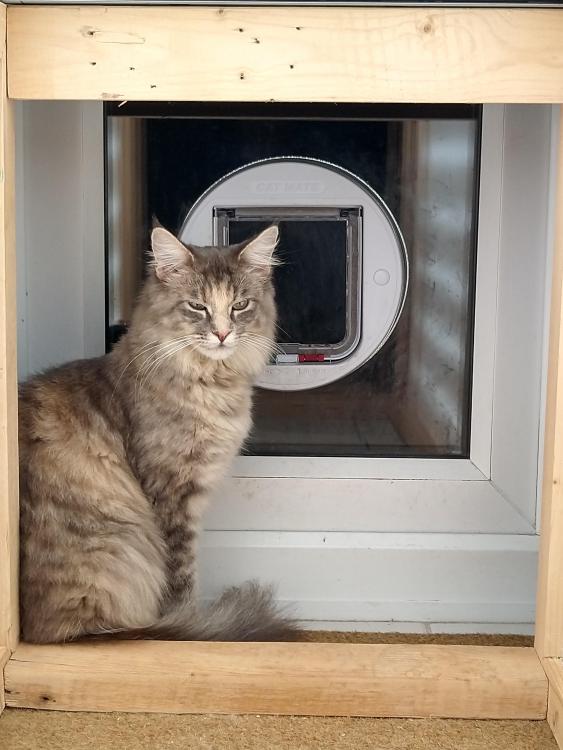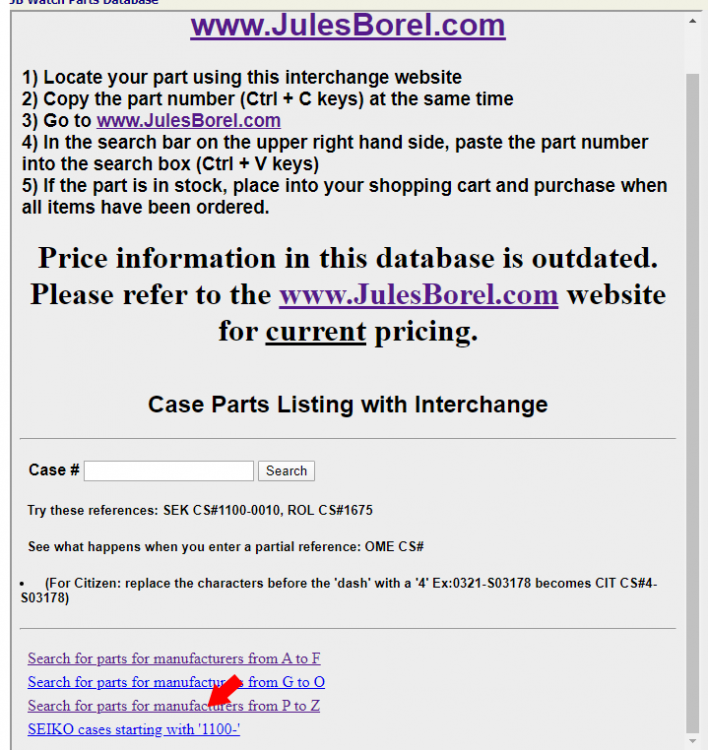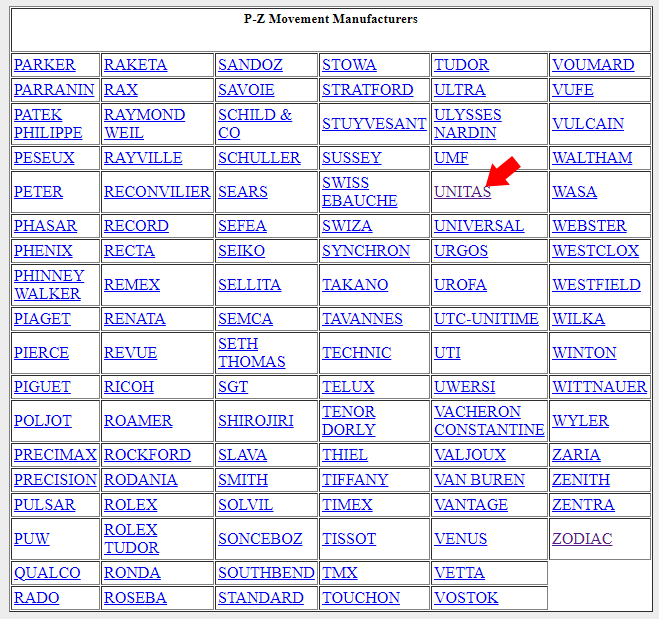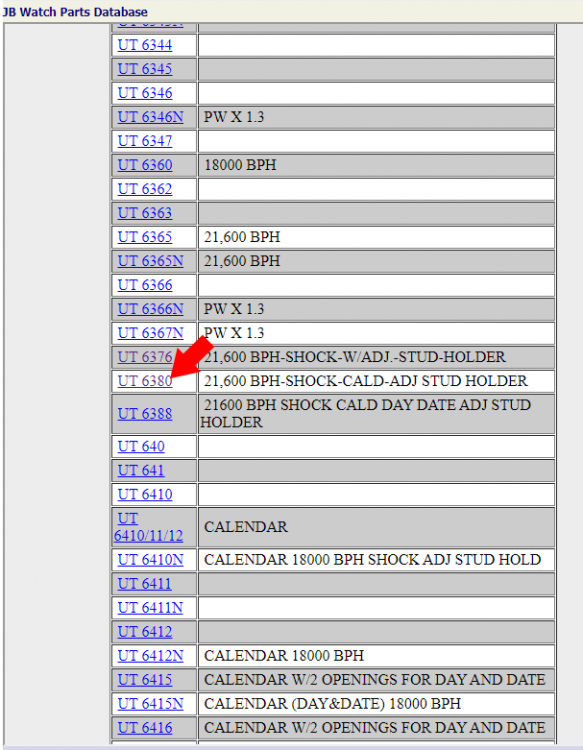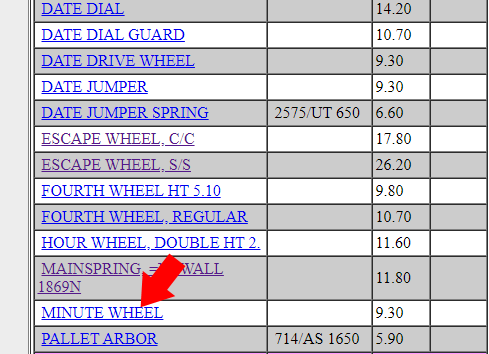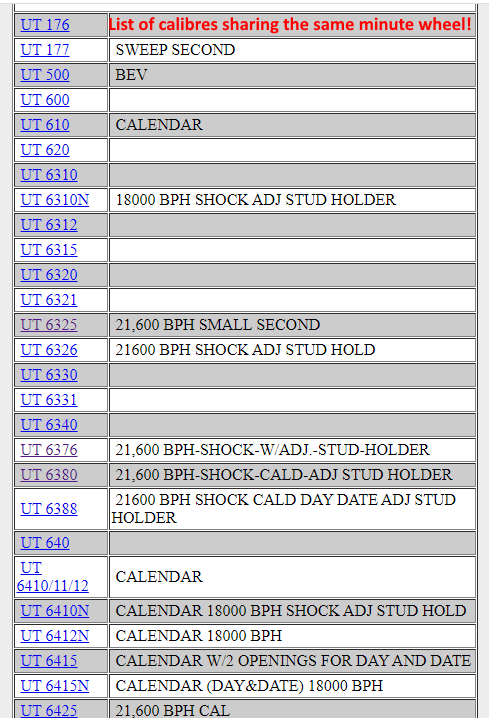Leaderboard
Popular Content
Showing content with the highest reputation on 09/26/21 in all areas
-
Hello fellow members, hope you all are well. And I hope your families are well during these times.3 points
-
Coincidentally I've posted that recently. Here how it's taught in watchmaking school: https://watchmakingjourney.com/2014/08/16/last-week-final-project-colleting-and-studding-hairsprings/3 points
-
You might find rodico work as well or better than grease, worth a try. I got no lathe and sharpen tips of old pins with backward strokes on a fine sandpaper, flies off couple times,but as long as you can find it one pin would do. Regs3 points
-
He advises against using an ulta sonic bath for watch parts. They should only be used for watch bracelets the case and the case back.3 points
-
Let's put things in perspective, these label warnings at our age should be well know already. Amount of of petrol/alcohol/whatever else is needed for manual cleaning, 20cc in a jam container with lid. Exposition time while pouring, replacing etc. 20 seconds. Tanks heaven out is a very low risk hobby/profession.2 points
-
As with all cleaning agents we all have our preferences and methods. The main precaution being, read the instructions on the product or better still get the safety sheet and exercise common sense in the use of these chemical as some are highly in flammable or even explosive in an enclosed space. The watch word is CAUTION.2 points
-
I think the ultrasonics in the professional watch cleaning machines are fine, as they rotate the parts to prevent continuous cavitation in one part. The cheap ultrasonics used for jewelry is also fine most of the time, but @HectorLooi and @Nucejoe have warned about their use potentially causing damage under some conditions. I use a cheap ultrasonic myself to clean some parts of a movement with diluted Elma red, but I have observed plating removal if the plating has been damaged prior by old age/tarnish. In addition to those two naphtha containing products @watchweasol recommended, I would also recommend some peg wood for cleaning. You may be able to use high quality wooden toothpicks instead though... In any event, after cleaning the movement, you would still have to oil it when you put it back together, so I’m not sure how low cost it will be once you add the prices of all the other things you would have to purchase. Heres the instructions on the back of my Elma Red.2 points
-
As the origional question was cost related, two cheap and readily available probdcts in the UK are carburetter cleaner and automotive brake/clutch cleaner both contain Naptha , a petroleum distilate and Isopropyl alchohol plus butane as they are pressure cans. Again I have used both with no problems in either drying or cleaning/degreasing. Usually used in small jars in the U/s. On the question of Ultrasonics If they are not recommended, why have companies such as Griener, ELMA, L&R. Watchmaster to name but a few ,invested money in creating machines that are ultrasonic, and dual machines with both U/s and conventional operations. It seems that its wide open to debate as far as preferences go. I think is a personal choice.2 points
-
I have tried this task many times and failed. It is however a skill worth learning because hairsprings are difficult to source and I have many but without a collet. Thanks for sharing2 points
-
I reuse the old pin if it is not damaged. I used to use my tweezers to insert it in the hole but the pin tends to swivel around and fly off. Then I learnt a trick from Nucejoe, which works amazingly well. He taught me to put a little dab of grease on an oiler and stick the end of the pin to it, then dangle the tip of the pin over the hole and guide it in. And every since, re-pinning a hairspring is no longer daunting.2 points
-
Let me introduce my new light box: Behemoth No 1. I got the idea from youtube where someone was converting broken LED TVs to provide realistic artificial daylight. I thought that it could work with photography - you actually can buy different sort of light boxes - so I could take pictures of watches and if it is a bit bigger then clocks too. So I went for a hunt for broken LED TVs on FB marketplace. After countless hours of work I ended up with this monster now I struggle to find a place for. The size was determined by one of the LED TV where I cut the screen layers into half providing light from the two sides and there is another LED TV screen on the top. Power supply came from the skip, just like the plywood and the pallet wood. I had to buy the LED strips and the background. Considering the number of working hours, the trips you have to make to collect the TVs and to dispose the parts you don't want, the money I spent on the strips and the background probably you would be better of if you just would buy one of the ready made ones from ebay you can put into your backpack. Of course you would not have the fun I had and the glory now. Here you can see the details of my Behemoth, I bought black, white and red backgrounds (45 cm wide 1,5 m long felt). I can separately switch on and off the two sides and the top. For demonstration I actually used a galvanometer and a cat called Smudge.1 point
-
That's what I was thinking as well. The longer I cut the section from the old mainspring, the less of a problem this will be.1 point
-
I hated science. The teacher I had always kept hitting me on my head with books because I was always messing about.1 point
-
I will remember this for next time. I just got done re-pinning a hairspring on a Swiss cylinder ébauche. Using tweezers for this is only good if you like looking for pins and torturing yourself. Thanks for the tip, gentlemen!1 point
-
I got isopropinoal from a pharmacist, he wrote very toxic on the bottle before handing it over, should not be drank, get in eyes etc, I think I inhaled some so been dreaming naked old girls in sleep.1 point
-
Wow...indeed it works! I unpinned and then re-pinned this morning using this technique. Nice!1 point
-
Since you’re in the UK, you can get watch supplies for low delivery fee from cousinsuk. For your maximum enjoyment, I would recommend at the bare minimum one bergeon or dumont brass tweezers, screwdrivers (you probably already have this, since you took a movement apart), movement holder, a loupe (optics), a set of oilers, some pegwood, a rubber bellows, and your choice of oil, and choice of cleaning fluid.1 point
-
Not too sure why but the tarnished parts of the movement mainplate/bridge on a movement I was working on came off entirely and I could see the bronze when I ultrasonicated the parts in diluted Elma red (1:9) as recommended. Could be that the nickel plating on the tarnished parts was very weakened. It also caused the parts of my bronze tweezers it contacted with to shine. I used it as a dip for the the train wheels, to make them shine!1 point
-
According to H S Walsh It can be used in watch cleaning machines or in ultrasonic cleaning baths. no mention of using it for cleaning parts by hand. If it is that aggressive I can't think why one would want to use such stuff.1 point
-
Elma red is a very good cleaner and makes parts shine, but if there is any hint of tarnish of the nickel plated main plate or bridges it can clean the tarnished sections right down to the bronze layer, in as little as 5 min in Ultrasound... the untarnished parts will really sparkle though.1 point
-
I have have never heard of any watchmaker, professional or not, which recommend soaped water. It's just not right for cleaning a watch mov.t. As mentioned above, there is no need for special cleaner but there is for a petrol based one. I recommend the classical horological product, petroleum ether. On Ebay UK the cheapest (smallest) bottle cost a mere £9.95 shipped. Of course if you buy a biggest bottle the cost per liter gets lower. No matter the size, the cost per liter is lower than lighter fuel, and the purity much higher, notwithstanding one will read here and elsewhere people always recommending the latter. After that, if cone want to avoid rinsing id demineralized water, that is fine. And even IPA (not a costly purchase starting £5 or so) is skippable, just do a 2nd or 3rd rinse in petroleoum ether. For all rinses, do it in a clear jar and look at it against light, if you can seen floating particles, discard the fluid (but save it for other purposes) and rinse again. Nobody made that suggestion and personally I recommend beginners against spending even 500, or even 50 for that matter. But if one is just a tiny bit serious about this hobby, the price of a meal out for this or that tool isn't unreasonable IMO.1 point
-
Going back to the first posters question, whould a wash in dish soap and water, followed by rinse in water and a final rinse in IPA work. For a first time clean then the answer is yes it would do a better than nothing job. Yes you could do better with a different cleaning agent, but they cost far more than their true value, given the chemicals they contain, most are mainly a mix of Mineral Spirit and Naphtha, with a few other additions. But at around £40 for only 4Litres I find them a rip off, given what's actually in them. One of the better value cleaners is ELMA Red which works out around £25 for 10 litres once mixed. But even that is too expensive for the possible one off cleaning the O/P is suggesting. For simple degreasing dish soap and water will be better than nothing, or something like lighter fluid, or mineral spirit (White Spirit in the UK) or even a paint thinner would work well for what the O/P is asking. It's no good suggesting the first time watch servicer needs to spend 5 grand on cleaning chemicals and high end cleaning machine, all that does it put the potential hobbyist off the hobby. Paul1 point
-
1 point
-
I haven't watch the video but there's another problem other than opinions? The problem is watch repair has been occurring over how much time? If you look at Wikipedia they claim the first watches came into existence the 16th century so that's been a long time ago obviously cleaning fluids probably changed over time. I doubt back in the 16th century could run out to your local watch material house and purchase cleaning fluid but probably made it with whatever they had available. Then if we restrict the discussion the last hundred years or so we still end up with a whole bunch of books and references conceivably to homemade solutions sometimes using soap. This is actually far more common with clock cleaning solutions. But typically for the clock fluids there are formulas out there they're just not randomly throwing together whatever they have in the kitchen hoping it's going to clean. That is unless of course you get a hobbyist book and then Morgan a skip over how they do things. this means that depending upon your background experience your reference materials your opinion will be different. I like the above quoted paragraph. Because your Axa going into separate directions at once. As your new and you don't care about the watch you can do whatever you feel like. But then you want to be successful unfortunately the two are not necessarily the same thing. I would suggest going ahead and trying but see what happens? Who knows it might work for you and if it doesn't then? Unfortunately In watch repair usually the painful lessons are the ones we remember and as you said it's disposable watch. Oh dear I'm in trouble now at home I always use a hair dryer but? Saying using a hair dryer can be misleading also? At home I use Small baskets for all the small parts and everything larger is on wires. Which means it can go in front of a hairdryer and nothing blows away. So previously I would just replace the parts in front of the hairdryer and let the thing dry. Then I got fancy and modified a coffee can so they are blows into the can and midway up there's a screen I place all the stuff on the screen the Air Canada circulates around I put a piece of metal on top to restrict most the air so things can get nice and hot and it dries quite nicely so hairdryer's work fine if you can contain your parts.1 point
-
As shellac can dissolve and alcohol it does have another property which you've brought up up above. That is if you deliberately dissolve your shellac in alcohol it becomes a liquid glue. You can apply it to existing parts if you think you're having a problem. Or on new parts and once the alcohol has evaporated you get heated up and move things around with no problem. In other words another way to apply the shellac.1 point
-
Under the other screw for holding the movement ring was a washer like this. So now i know where it should be. Movement working great with an amplitud of 275 . Had some trouble with the balance jewel. The endstone was loose inside the fitting. But manage to put it back Now it's just to figure out how to set the hands. So the alarm goes of when it should.1 point
-
Having owned three, I don't think U/S makes such a big difference in cleaning watch movements. What one want is to dissolve old oils, for that petrol and pegging do just fine, then look under magnification how jewels are doing. They were making and repairing unbelievable watches 3 centuries ago, not even the ultrasonic word was known back then. There is so many more important other things to learn and worry about for a beginner wanting to learn and practice.1 point
-
Hello everyone, I've just started out breaking down a watch for the very first time. It's a movement from what I think is a 90s Vostok which I bought from Ebay for about $15. I purposely bought the cheapest I could see so that it was destroyable! I've successfully taken it apart and before I attempt to put it back together I figured it made sense to give the parts a clean. As a first timer and not knowing whether this is the last one I'll do, I'm not going to buy an ultrasonic machine and to be honest the only reason I'm cleaning is to give myself the best chance of it actually running a bit more smoothly when I put it back together. With that in mind and having researched what I can, I'm thinking of the following: 1. Soak the parts in warm distilled water with a drop of 'dish-soap' (good old UK 'Fairy liquid') and then a gentle brush with a fine paint brush. 2. Soak in 99% isopropyl alcohol and brush again. (I won't do the balance or pallet-fork in this.) 3. Dry on watchmaker's paper with a quick blast from a hairdryer. Given my newbie-status, an almost-zero budget and a non-interest in the longevity of the watch, am I doing anything absolutely stupid? The goal as I say is just to increase my chances of a 'successful' assembly. Thank you sincerely for your time, ~rockpenguin~1 point
-
Which on Miyota is the correct position. In all cases, if the pinion has walked from under the lever, it must be reset by partial disassembly.1 point
-
I would certainly assume that the following is “old news” to the seasoned among you, but if you’re new (or pretty new, like me) to watch repairing, I think and hope you’ll find the following information useful. As most of you know, finding watch movement spare parts can be pretty trying. Oftentimes, they can’t be bought new as they are obsolete or restricted, and as a hobbyist it is even worse. So, one strategy I intend to use in the future will to buy complete movements on flea markets sold as “for parts/repair”. Even so, finding the exact calibre can take a very long time. I had this problem with a Unitas calibre 6380. I needed a new pallet and an escape wheel. When searching eBay all I found were expensive complete watches. Searching the Internet, I came across a page here on WRT which eventually led me to the page “JBorel Products Watch Parts”, and this page felt like a gift from the watch gods. Using this page, once you’ve located the watch movement part you’re looking for you can, with a simple click, get a list of all other calibres (and sometimes even other brands of calibres) using this exact part. That makes it so much easier to find a donor movement or the part itself if it is not listed, for example on eBay, for the calibre you’re working on. For example, let’s say we need a minute wheel for a Unitas calibre 6380 (just follow the red arrows which indicates a click):1 point





